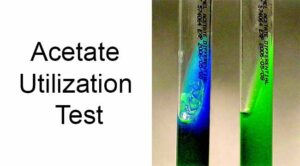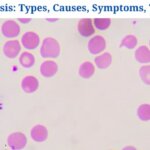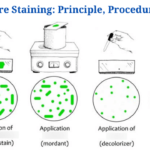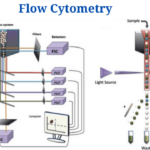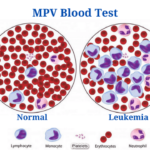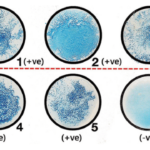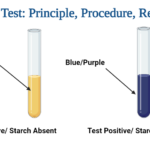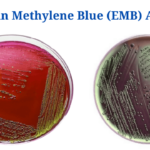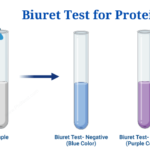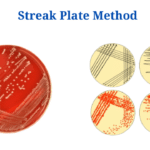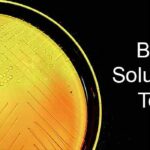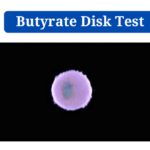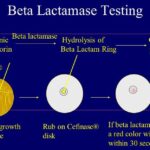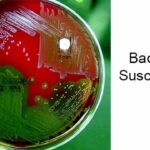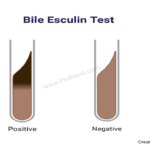What is Acetate Utilization Test?
The acetate utilization test is a biochemical experiment that evaluates an aerobic organism’s capacity to consume acetate in the growth medium. The acetate consumption test is often used in qualitative approaches to differentiate Shigella species from Escherichia coli and non-fermentative gram-negative bacteria.
- The ability of an organism to use acetate as a sole supply of carbon is the basis of the acetate utilization test.
- This test resembles the acetamide utilization test and other comparable tests.
- This test is particularly useful in distinguishing Shigella from coli because the majority of E. coli strains can use acetate, whereas most Shigella species cannot.
- One of the strategies for distinguishing between the fermentative and oxidative groups of organisms is the acetate utilization test.
- The use of acetate induces a change in the pH of the medium, which causes the color of the pH indicator employed in the medium to change.
Objectives of Acetate Utilization Test
- To distinguish between Gram-negative rods that are oxidase negative, nonmotile, and androgenic, which are most likely E. coli or Shigella bacteria.
- To distinguish lactose-non-fermenting Gram-negative bacteria from lactose-fermenting bacteria.
Principles of Acetate Utilization Test
Acetate agar is a biochemical test medium used to measure an organism’s capacity to utilize acetate. Organic acids such as citrate and acetate have long been used to distinguish between members of the Enterobacteriaceae family. In the presence of organic nitrogen, the majority of these bacteria can use organic acids.
The acetate media contains inorganic ammonium ions as a nitrogen source and acetate as a carbon source. A positive acetate utilization test is shown by the organism’s growth on the media. The bacteria’s metabolism of acetate is followed by the breakdown of ammonium ions into ammonia.
The pH of the medium rises as ammonia is released. The bromthymol blue indicator in the color of the medium changes from green to blue as the pH changes. This medium is recommended for distinguishing Shigella from E. coli. Acetate is used by approximately 84 percent of E. coli strains, but the majority of Shigella and Proteus species are unable to use it.
Media and Reagent used for of Acetate Utilization Test
1. Media Used
The growth medium containing sodium acetate as the only source of carbon was employed in the acetate utilization test. The following is the acetate agar medium’s composition:
[ninja_tables id=”3908″]2. Materials Employed
- Inoculating loops or sticks that are sterile.
- Pipettes that are sterile.
- At 35°C, incubate the eggs.
- Saline sterile
Procedure of Acetate Utilization Test
1. Getting the media ready
- 69.1 grams of dehydrated powder or lab-prepared media are mixed with 1000 milliliters of distilled or deionized water in a beaker.
- The suspension is then brought to a boil to completely dissolve the medium.
- After that, the dissolved medium is poured into tubes and sterilized in an autoclave for 15 minutes at 15 lbs pressure (121°C).
- After the autoclaving process is completed, the tubes are removed and cooled to a temperature of around 40-45°C in a tilted posture. To obtain butts of 1.5–2.0 cm depth, the posture should be maintained.
2. Utilization test
- A sterile inoculating needle is used to extract a well-isolated colony from an 18-24 hour culture.
- Instead, an 18- to 24-hour culture from a noninhibitory culture plate can be used to make a turbid saline solution.
- The light inoculum from the culture plate or a drop of the saline suspension is streaked across the surface of the slant to inoculate the acetamide agar tubes. With the loop or the inoculating stick, streak the slant back and forth.
- To maintain appropriate aeration, the test tube caps should be left unfastened.
- The tubes are then incubated aerobically for up to 7 days at 35-37°C. For Enterobacteriaceae, incubation at 35-37 °C for up to 5 days is insufficient, whereas incubation at 30 °C for 7 days is advised for nonfermenting, Gram-negative rods.
- Before dismissing the result as a negative, the test tubes should be inspected daily for four days and then again for seven days.
Result Interpretation of Acetate Utilization Test
Figure: Acetate Utilization Test Results. Image Source: Bailey and Scott’s Diagnostic Microbiology. Elsevier.
- Growth and a change in hue from green to bright blue along the slant indicate a favorable test.
- There is no growth, no color change, and the slant remains green in a negative test.
Control bacteria
Two distinct species can be used as a positive and negative control for the acetate utilization test as a quality control measure.
[ninja_tables id=”3910″]Uses of Acetate Utilization Test
- The acetate utilization test evaluates an organism’s capacity to use acetate as its only supply of carbon.
- It’s also employed as a qualitative test to distinguish between the fermentative and oxidative groups of Gram-negative bacteria.
- Acetate agar is also used to isolate E. coli as a selective medium.
Limitations of Acetate Utilization Test
- A positive test could be indicated by growth on the slant without an accompanying color change.
- The test should be repeated with less inoculum if the agar does not turn blue after more incubation.
- Tests that yielded ambiguous results should be repeated. Because the test demands an aerobic atmosphere, the slant should not be punctured.
- Because there is a risk of media carryover with broth cultures, inoculums should not be taken from them.
- To prevent the transfer of chemicals from prior media, a mild inoculum should be used.
Acetate Utilization Test Citations
• Bergman JM, Wrande M, Hughes D (2014) Acetate Availability and Utilization Supports the Growth of Mutant Sub-Populations on Aging Bacterial Colonies. PLOS ONE 9(10): e109255. https://doi.org/10.1371/journal.pone.0109255
• Trabulsi LR, Ewing WH. 1962. Sodium acetate medium for differentiation of Shigella and Escherichia cultures. Public Health Lab 20:137–140.
• Bailey and Scott’s Diagnostic Microbiology. Elsevier.
Related Posts
- Anisocytosis: Definition, Types, Causes, Symptoms, Treatment
- Endospore Staining: Principle, Procedure, Reagents, Results
- Flow Cytometry: Overview, Principle, Steps, Types, Uses
- Northern Blot: Overview, Principle, Procedure and Results
- MPV Blood Test: Calculation, High and Low MPV Value, Results
- Latex Agglutination Test: Objectives, Principle, Procedure, Results
- Iodine Test: Definition, Objective, Principle, Procedure, Results
- Eosin Methylene Blue (EMB) Agar
- Biuret Test for Protein: Purpose, Objectives, Principle, Procedure, Reagents
- Streak Plate Method: Meaning, Principle, Methods, Importance, Limitations
- Bile Solubility Test: Objective, Principle, Procedure, Results, Uses
- Butyrate Disk Test: Objective, Principle, Procedure, Results, Uses, Limitations
- Beta Lactamase Test: Objective, Principle, Procedure, Results, Limitations
- Bacitracin Susceptibility Test: Objective, Principle, Procedure, Results, Uses, Limitations
- Bile Esculin Test: Objective, Principle, Procedure, Result, Uses, Limitations

